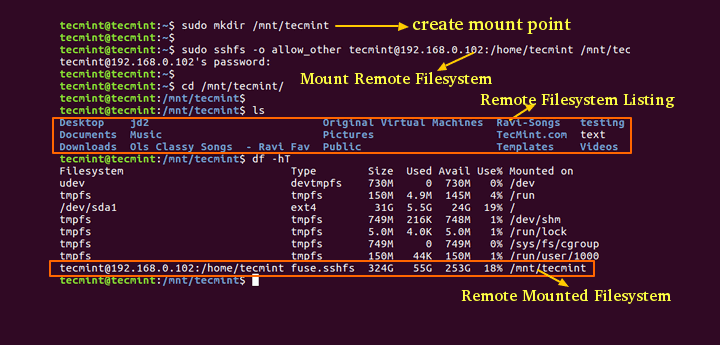Mounting File Systems Under Linux

/ – The Root Directory Everything on your Linux system is located under the / directory, known as the root directory. You can think of the / directory as being similar to the C: directory on Windows – but this isn’t strictly true, as Linux doesn’t have drive letters. While another partition would be located at D: on Windows, this other partition would appear in another folder under / on Linux. /bin – Essential User Binaries The /bin directory contains the essential user binaries (programs) that must be present when the system is mounted in single-user mode. Applications such as Firefox are stored in /usr/bin, while important system programs and utilities such as the bash shell are located in /bin. The /usr directory may be stored on another partition – placing these files in the /bin directory ensures the system will have these important utilities even if no other file systems are mounted.
Oct 20, 2010 - Learn to mount your Linux filesystems; configure and use removable USB, IEE 1394, or other devices; and properly access floppy disks, CDs,.
Xirrus software. Wi-Fi Inspector has become the standard to quickly & easily gain visibility into their networks. Riverbed Xirrus Wi-Fi management software is designed to provide real-time monitoring of Wi-Fi network status & help ensure the highest performance available from the wireless network. Xirrus Wi-Fi Inspector is licensed as freeware for Windows 32 bit and 64 bit operating system without restrictions. It is in wifi / bluetooth category and is available to all software users as a free download. Publisher's Description. From Xirrus: The Xirrus Wi-Fi Inspector is a powerful tool for managing and troubleshooting the Wi-Fi on a Windows XP SP2 or later, Vista, or 7 laptop. Built in tests enable you to characterize the integrity and performance of your Wi-Fi connection.The application include where it search for Wi-Fi networks,it managing.
The /sbin directory is similar – it contains essential system administration binaries. /boot – Static Boot Files The /boot directory contains the files needed to boot the system – for example, the GRUB boot loader’s files and your Linux kernels are stored here.
The boot loader’s configuration files aren’t located here, though – they’re in /etc with the other configuration files. /cdrom – Historical Mount Point for CD-ROMs The /cdrom directory isn’t part of the FHS standard, but you’ll still find it on Ubuntu and other operating systems. It’s a temporary location for CD-ROMs inserted in the system.
However, the standard location for temporary media is inside the /media directory. /dev – Device Files Linux exposes devices as files, and the /dev directory contains a number of special files that represent devices. These are not actual files as we know them, but they appear as files – for example, /dev/sda represents the first SATA drive in the system. If you wanted to partition it, you could start a partition editor and tell it to edit /dev/sda. This directory also contains pseudo-devices, which are virtual devices that don’t actually correspond to hardware. For example, /dev/random produces random numbers. /dev/null is a special device that produces no output and automatically discards all input – when you pipe the output of a command to /dev/null, you discard it.
/etc – Configuration Files The /etc directory contains configuration files, which can generally be edited by hand in a text editor. Note that the /etc/ directory contains system-wide configuration files – user-specific configuration files are located in each user’s home directory. /home – Home Folders The /home directory contains a home folder for each user. Vashikaran mantra telugu pdf.